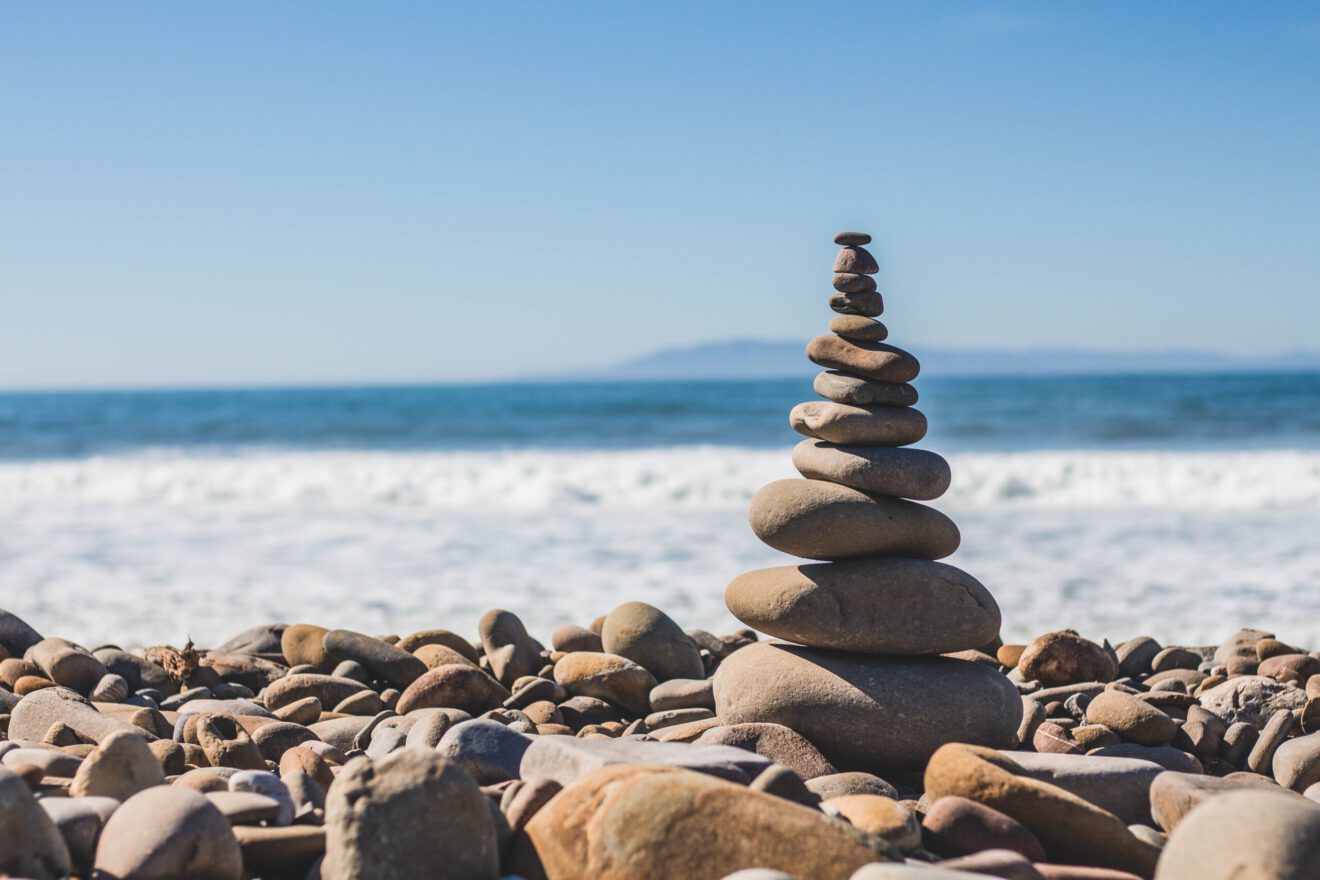The significant increase in rates of anxiety and depression among school-age children has brought the national spotlight to children’s mental health and wellness practices. Our youth are not alone in their distress. Recently published educational research finds the pandemic significantly impacted the mental health of many school system employees who are reporting clinically meaningful anxiety and depressive symptoms. One analysis of a large national data set notes that teachers experienced more anxiety than health care workers during the pandemic.

School mental health professionals report being overwhelmed by the volume of students in need. “Worst they’ve ever seen it,” many say. “Not enough hands to go around.” But are there more hands than we realize?
When disaster strikes a community, every member has an opportunity to be that extra pair of hands helping on the front line for emotional recovery. Whether it’s a casserole brought to a hungry family or sharing a nature walk, nothing is too big or too small when it comes to providing emotional support.
This tenet also holds true for school communities. Like frontline workers, disaster responders and caring community members, classroom educators are uniquely positioned to practice wellness with their students, especially by using practices that also help themselves. As the adage goes, “You can’t drink from an empty cup.” When we care about ourselves, we care for ourselves, which is the essence of self-care.
Wellness is a natural capacity we all have. But falling upon hard times may deplete our reserves and reduce our capacity to mark ourselves as well in the aftermath of a crisis. With fewer reserves, we are prone to stress reactivity and anxiety. We may find ourselves in the feeling states of numbness and collapse or agitation and high arousal.
When we spend most of our time in an emotional state where we feel safe, empowered and connected to the social world, we perform better. We can go with the flow. Believe in ourselves. Know others are there for support. Know we are not alone. Know we’ve got each other, and we got this.
So, if you and the students “don’t got this,” build the classroom’s capacity with the following wellness practices to nurture resilience, manage stress and anxiety, fill your cup and replenish the classroom well. Most students tend to buy into well-being efforts the teacher authentically embraces and reinforces. When practiced regularly, wellness strategies become habits that root.
Practice wellness first by developing self-compassion
Researcher Kristen Neff calls self-compassion “the secret sauce” of mental health. This rich sauce consists of the willingness to observe your thoughts and feelings without judgment, to be kind to yourself (and others) when you fall short, and to recognize that inadequacy and imperfection are part of the human condition. When we run into a hard time or challenge, compassion invites us to acknowledge the situation as a moment of suffering without making the situation worse through criticism. Compassion helps us “do hard things in a human way” and strengthens our resilience. The more we practice the skill of self-compassion, the more it becomes the way we relate to ourselves and others.
Catch it. Check it. Change it.
This is a cognitive behavioral skill that fosters helpful thinking so we keep on keeping on. Helpful thinking combines mindful awareness and reframing to soothe with self-compassion. Imagine hearing a student (or yourself) say, “I’m really behind. It’s useless to do anything. I’m just going to fail anyway, so why bother?” This compassionate approach can reframe that unhelpful mindset.
- Catch it (the thought). “I’m really behind, and I feel like it’s useless to even try.” (That’s the mindful awareness of a moment of suffering).
- Check it. Is that a helpful thought? (That’s the mindful awareness of self-criticism).
- Change it. “A lot of us are having a hard time catching up after the pandemic.” (That’s common humanity).” Maybe I can’t catch up, but I can make some progress, especially with support.” (That’s self-kindness).
Tend and train the self-regulatory coping system
Anxiety is a natural response to excess stress. Instead of waiting until we get overwhelmed and into a fight, flee, freeze reaction, we can take action when anxiety arises, knowing that action binds anxiety.
Breathing, soothing, moving, anchoring and grounding
These strategies are very effective for helping us reset. They lower sympathetic nervous system activation to help restore autonomic nervous system balance. Being able to manage stress helps us feel safe, empowered and connected so that, instead of reserving these wellness practices for times when troubles hit the fan, we can habitualize them through regular practice and reinforcement.
How much time will this take? After initially training students, five minutes of daily practice (less than the time it takes for a do-now and a lot less time than an outburst). When done as a group, these wellness practices lead to co-regulation, which helps foster self-regulation.
There are many online techniques you can model to train students or peer leaders. Commit to one or two, and authentically embrace the practice. Some suggestions:
Breathing. Begin with a soft gaze, eyes lowered, comfortable seated position and simple diaphragmatic breaths in and out to the count of four. Do 15 rounds (90 seconds) to start, and build to five minutes. You can pair the breath with an affirming statement:” Breathing in, I know I am breathing in. Breathing out, I smile.” Notice the word “smile” generates a smile.
Soothing. Touch textured materials, rock gently, listen to calming music, use a weighted blanket, etc.
Moving. Try chair stretching, drinking water, walking on clouds, shake dancing, desk drumming (silent taps),using rain shakers, tensing and relaxing muscle groups, or doing tai chi or qi gong moves.
Anchoring. Find something that reminds you of the feeling of being anchored in regulation — such as a favorite pet picture, a symbol or a picture of a happy place or recent positive emotional experience — and put it somewhere you’ll see it during the day, advises author Deb Dana.
Grounding. Explore the five senses by first placing a hand on the chest and taking some calming breaths. Then name five things you can see, four things you can feel or touch, three things you can hear, two things you can smell and one thing you can taste. Other techniques: silently counting floor tiles or naming all the objects in sight.
Identify personal resources, capacities and social supports
The National Center on Safe Supportive Learning Environments recommends empowering students by finding indicators of their strength, mirroring the strengths back to students, encouraging and reinforcing student strengths, providing opportunities for strengths to flourish, and teaching students to cope and thrive.
Create an activity
An activity can help students to identify their strengths, interest, and preferred activities (collages or peer interviews). Highlight efficacy and caring relationships by adding social support elements with specific prompts: A time when I helped someone solve a problem; handled a difficult situation; did something to calm down; or what others have said they like about me; what helps me in times of need; whom I go to for good advice. Keep these personal portraits visible or accessible and revisit them for reflection and revision.
In the aftermath of disaster, small things matter greatly. Emotional support strategies reduce overwhelm, hopelessness and isolation, and they increase safety and agency. They are therapeutic without replacing necessary mental health services. They help us fill our well.
Mary Fowler is an author and professional staff development provider. Her articles have appeared in ASCD Express and the NJEA Review. She recently worked on the New Jersey COVID-19 emotional recovery grant to help individuals, school mental health personnel and frontline workers through a series of wellness practices to help support daily coping. Contact her at [email protected].
Opinions expressed by SmartBrief contributors are their own.
_________________________
Subscribe to SmartBrief’s FREE email ASCD newsletter to see the latest hot topics in education. It’s among SmartBrief’s more than 250 industry-focused newsletters.
